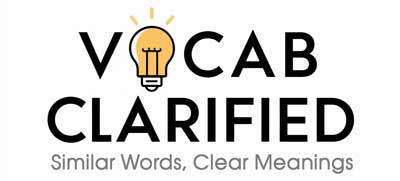Ever found yourself puzzled over whether to write “foreword” or “forward” in a specific context? If so, you are not alone. These two words may sound identical but have entirely different meanings and uses.
This article aims to dissolve the confusion surrounding “foreword” and “forward,” guiding you to a clearer understanding and more confident usage.
Understanding Foreword and Forward
Foreword: Definition and Usage
A “foreword” is typically found in the context of books. It refers to a short introductory section written by someone other than the author, often to provide context or credibility.
For example:
- “The foreword of the book was penned by a renowned historian, giving insights into the historical context of the narrative.”
- “In her foreword, the professor highlighted the significance of the research and its potential impact on future studies.”
Forward: Definition and Usage
In contrast, “forward” is used in various contexts, mainly as a direction or to signify progress. It means moving ahead or sending something onward.
For instance:
- “Please move forward to the next section of the presentation.”
- “She forwarded the email to her supervisor for review.”
Side-by-Side Comparison
| Aspect | Foreword | Forward |
| Definition | An introductory section of a book | Moving ahead or sending onward |
| Common Usage | “The foreword of the book…” | “Please move forward…” |
| Key Differences | Found in books, written by someone other than the author | Used in general contexts to denote direction or sending something |
When deciding between “foreword” and “forward,” consider the context. If referring to an introductory part of a book, “foreword” is the correct term.
However, in situations involving direction, movement, or sending information, “forward” is appropriate. Remember, the best choice often depends on the specific context and meaning you intend to convey.
Everyday Usage Examples
Let’s delve deeper with more examples to illustrate how “foreword” and “forward” fit into everyday language:
- Foreword: “The foreword in the new edition of the novel provides fascinating insights into the author’s life.”
- Forward: “After completing the initial draft, she forwarded it to her editor for feedback.”
FAQ: Foreword vs. Forward
The main difference lies in their meanings and contexts. “Foreword” refers to an introductory section of a book, usually written by someone other than the author, while “forward” indicates direction or progress and is used in various contexts.
No, “foreword” and “forward” cannot be used interchangeably as they have distinct meanings and are used in different contexts. “Foreword” is specific to books, whereas “forward” relates to movement or sending something onward.
A helpful way to remember “foreword” is to associate it with books and the word “before”. A “foreword” comes before the main text of a book, providing an introduction or context.
Use “forward” when referring to direction, movement, or sending information onward. For example, moving forward in a presentation or forwarding an email to someone.
Conclusion
Understanding the difference between “foreword” and “forward” is crucial for clear and effective communication. While “foreword” is specific to the introductory sections of books, “forward” serves a broader purpose in indicating direction or progression.
By keeping their distinct meanings and uses in mind, you can ensure accurate and appropriate usage in your writing.

